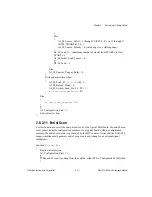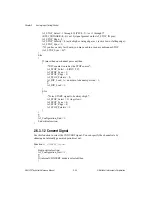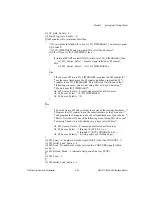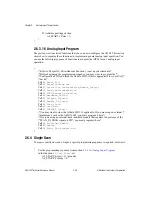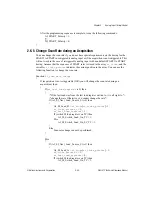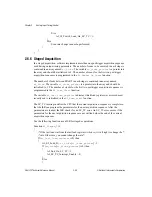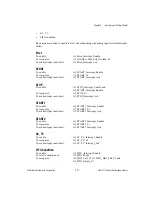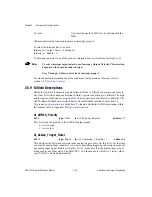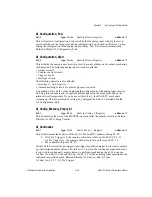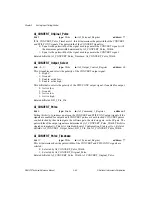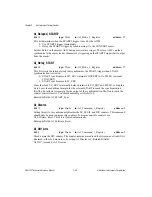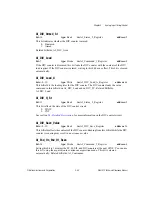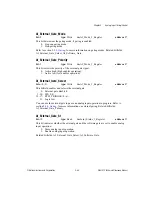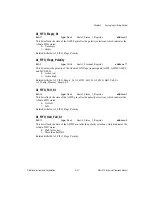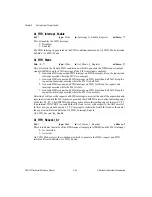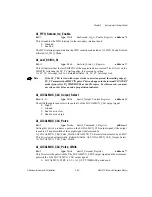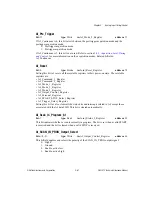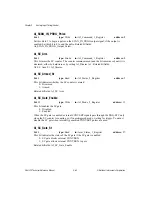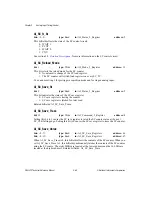
Chapter 2
Analog Input Timing/Control
DAQ-STC Technical Reference Manual
2-50
©
National Instruments Corporation
AI_CONVERT_Original_Pulse
bit: 9
type: Write
in: AI_Personal_Register
address: 77
If AI_CONVERT_Pulse_Timebase is 1, this bit determines the pulsewidth of the CONVERT
and PFI2/CONV signals. The pulsewidth of the CONVERT signals is:
0: Equal to the pulsewidth of the signal used to generate the CONVERT signal, with
the maximum pulsewidth determined by AI_CONVERT_Pulse_Width.
1: Equal to the pulsewidth of the signal used to generate the CONVERT signal.
Related bitfields: AI_CONVERT_Pulse_Timebase, AI_CONVERT_Pulse_Width.
AI_CONVERT_Output_Select
bits: <0..1>
type: Write
in: AI_Output_Control_Register
address: 60
This bit enables and selects the polarity of the CONVERT output signal:
0: High Z.
1: Ground.
2: Enable, active low.
3: Enable, active high.
This bitfield also selects the polarity of the PFI2/CONV output signal, if enabled for output:
0: Active low.
1: Ground.
2: Active low.
3: Active high.
Related bitfields: BD_2_Pin_Dir.
AI_CONVERT_Pulse
bit: 0
type: Strobe
in: AI_Command_1_Register
address: 8
Setting this bit to 1 produces a pulse on the CONVERT and PFI2/CONV output signals, if the
signals are enabled for output and if CONVERT pulses are not blocked. CONVERT pulses
can be blocked by the external gate, the software gate, the start/stop gate, or the SC gate. The
pulsewidths of the output signals are determined by AI_CONVERT_Pulse_Width. This bit is
cleared automatically. This bit is disabled when AI_Configuration_Start is set to 1. Related
bitfields: AI_CONVERT_Output_Select, BD_2_Pin_Dir, AI_CONVERT_Pulse_Width.
AI_CONVERT_Pulse_Timebase
bit: 11
type: Write
in: AI_Personal_Register
address: 77
This bit determines how the pulsewidths of the CONVERT and PFI2/CONV signals are
selected:
0: Selected by AI_CONVERT_Pulse_Width.
1: Selected by AI_CONVERT_Original_Pulse.
Related bitfields: AI_CONVERT_Pulse_Width, AI_CONVERT_Original_Pulse.


